Explore Scotland by train in just one week on this Scottish rail itinerary featuring castles, lochs and mountains as you travel from Edinburgh and Glasgow to the Highlands and Isle of Skye.
* This site contains affiliate links, where I get a small commission from purchases at no extra cost to you.
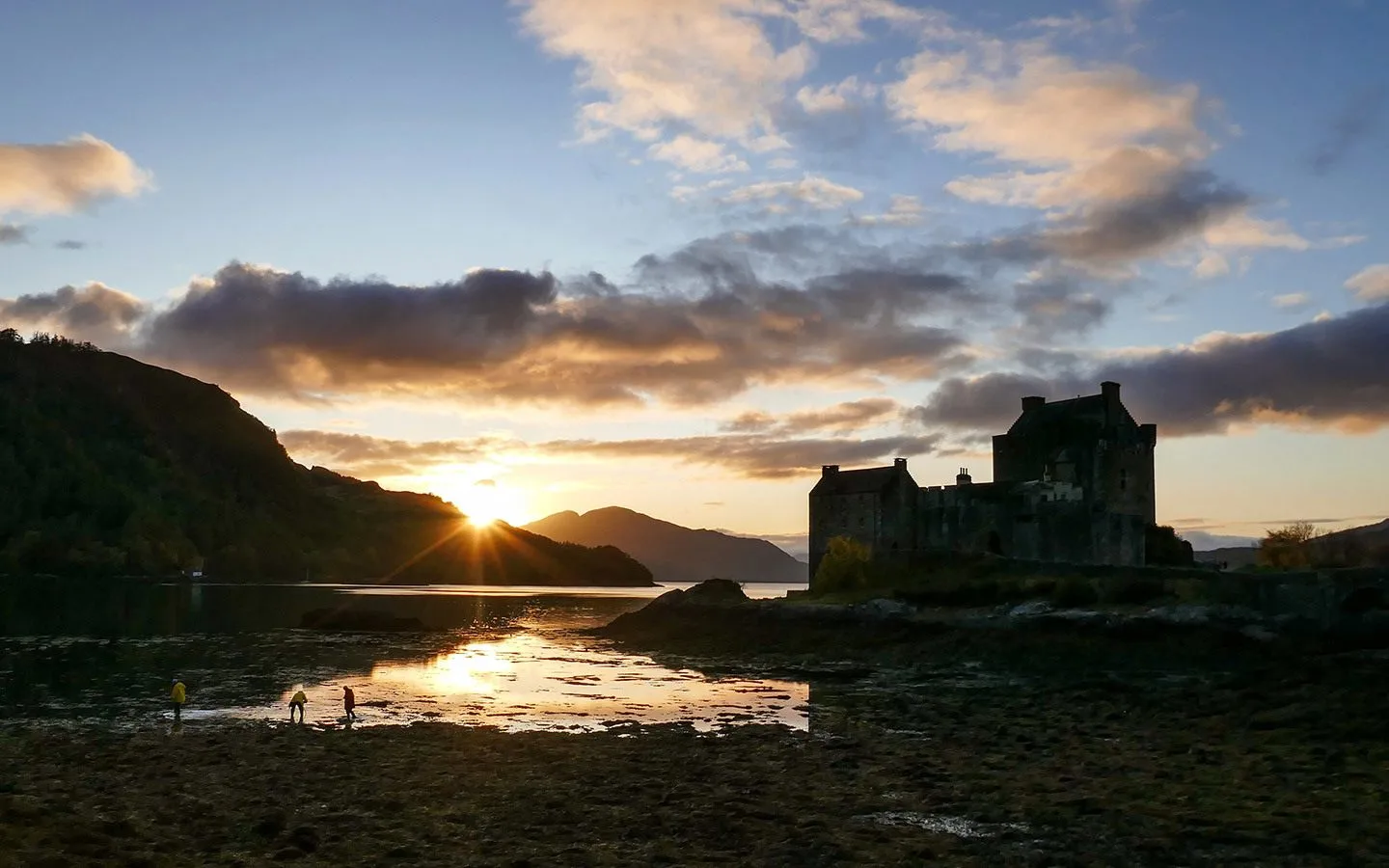
Travel across Scotland by train from the lowlands to the highlands, with historic cities, ruined castles, deep blue lochs, mountain peaks and wild moorland along the way. This one-week railway journey takes you from the cities of Edinburgh and Glasgow and heads north into the Scottish Highlands, crossing to the magical Isle of Skye before finishing in Inverness – and includes two of the UK’s most spectacular rail routes.
The Scenic Scotland by train one-week itinerary will show you which trains to take, how much they cost, how to book and what to see, do and where to stay along the way.
One-week scenic Scotland by train itinerary

Day 1: Edinburgh
Start your Scotland by train trip with a full day in Edinburgh. Visit the historic highlights of the Old Town – listen to bagpipers on the cobbled streets of the Royal Mile, learn about Scotland’s history at the National Museum of Scotland, hear the One O’clock Gun being fired at Edinburgh Castle, take a tour of the Queen’s Scottish residence the Palace of Holyroodhouse, or follow in the footsteps of Harry Potter on Victoria Street.
Alternatively head across to the wide Georgian streets of the New Town to admire the artworks at the Scottish National Portrait Gallery, climb to the top of the Scott Monument, wander along the leafy Water of Leith or watch the sun set from Calton Hill.
Or why not check out some of Edinburgh’s more unusual attractions? You can go underground to the buried streets of Mary King’s Close, visit the gory Surgeons’ Hall Museum (if you’re not too squeamish) or take an evening ghost tour.
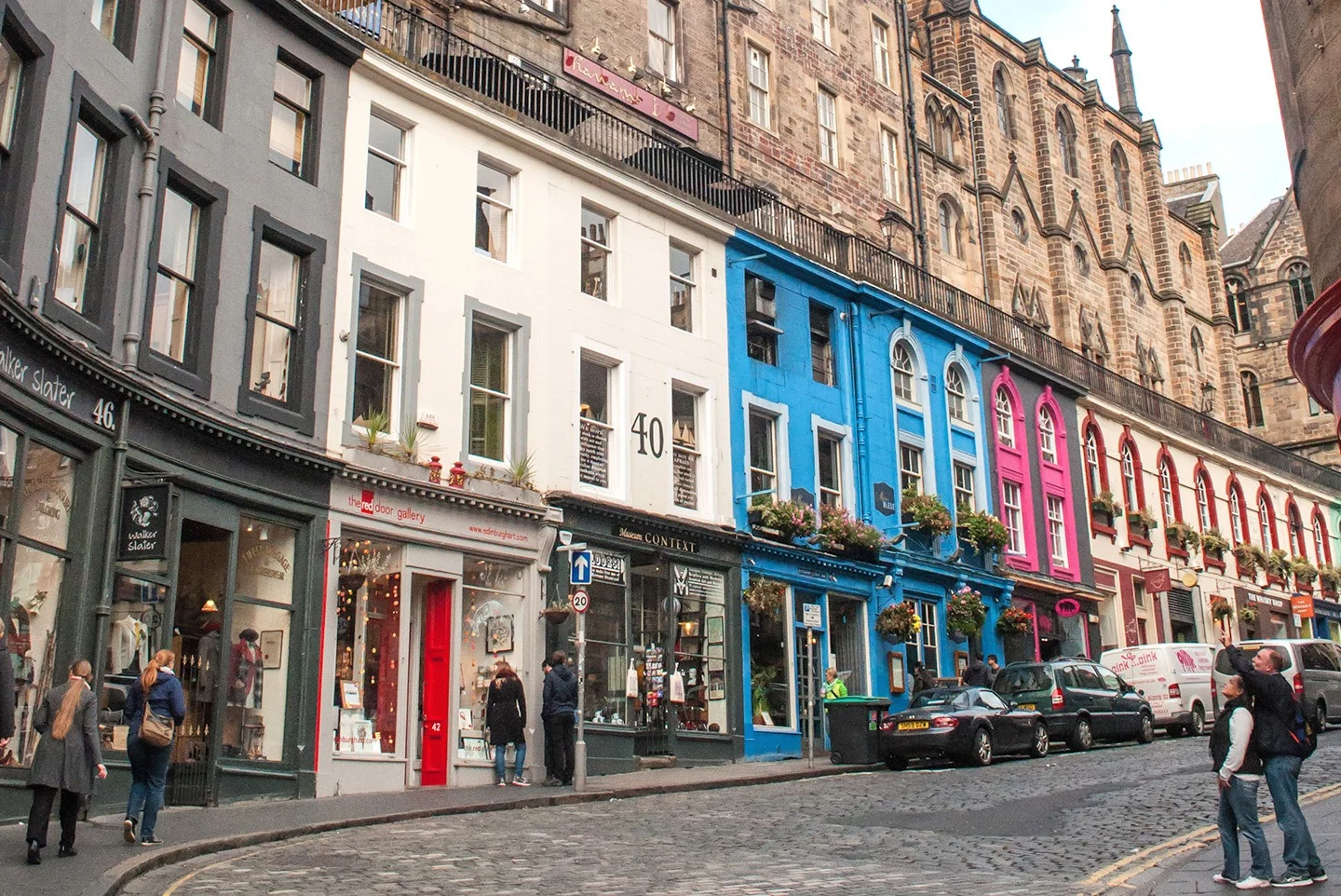
Edinburgh’s an unexpected gem for foodies, with a range of food and drink tours where you can try local delicacies – from handmade chocolates and Scottish cheeses to whisky tasting at the Scotch Whisky Experience* and distillery tours at Edinburgh Gin.
Where to stay in Edinburgh: Splash out on a stay on the Royal Mile at the gloriously over-the-top Witchery by the Castle*. This 16th-century Gothic hotel has nine suites with four-poster beds and rolltop baths, eclectically decorated with antiques, artworks, gilt and velvet. It’s full of old-school glamour, with one of the city’s most romantic restaurants.
Read more: A weekend in Edinburgh: 2-day Edinburgh itinerary
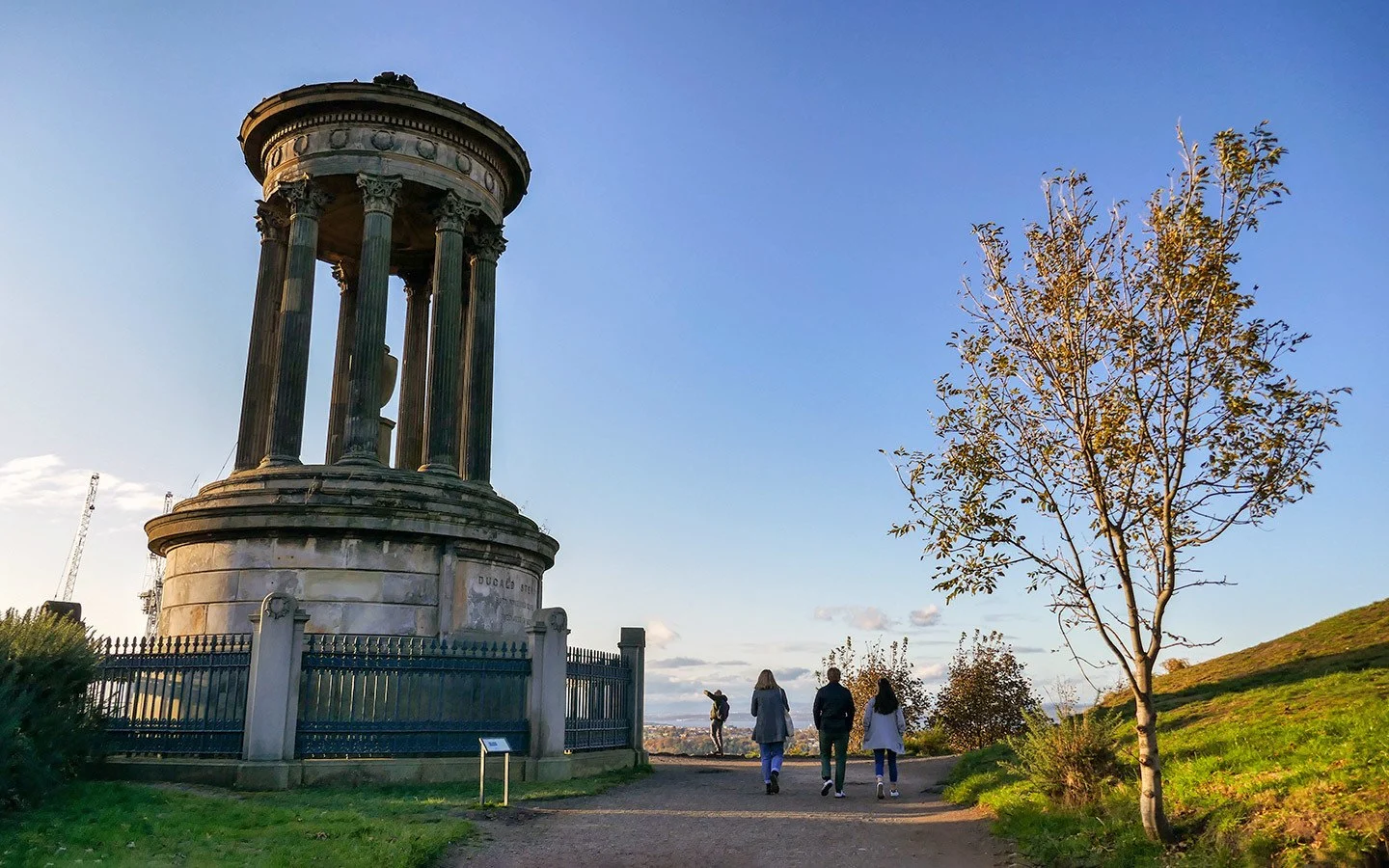
Day 2: Edinburgh > Glasgow
Next morning, catch a train from Edinburgh Waverley to Glasgow Central/Queen Street (a short walk from each other). The journey only takes an hour and trains run frequently, so you can decide how early you want to leave. Then spend the rest of the day in Glasgow.
Where Edinburgh is all about history, Scotland’s second city has a bit more of an edge, and has transformed itself from an industrial centre to a city of art and culture. Admire the Art Nouveau designs of Glasgow’s famous son Charles Rennie Mackintosh at the Kelvingrove Art Gallery and Museum or over afternoon tea at the Willow Tea Rooms.
Or explore some of the city’s more contemporary artworks on the City Centre Mural Trail, a self-guided walk through Glasgow which links 25 works by different local artists.
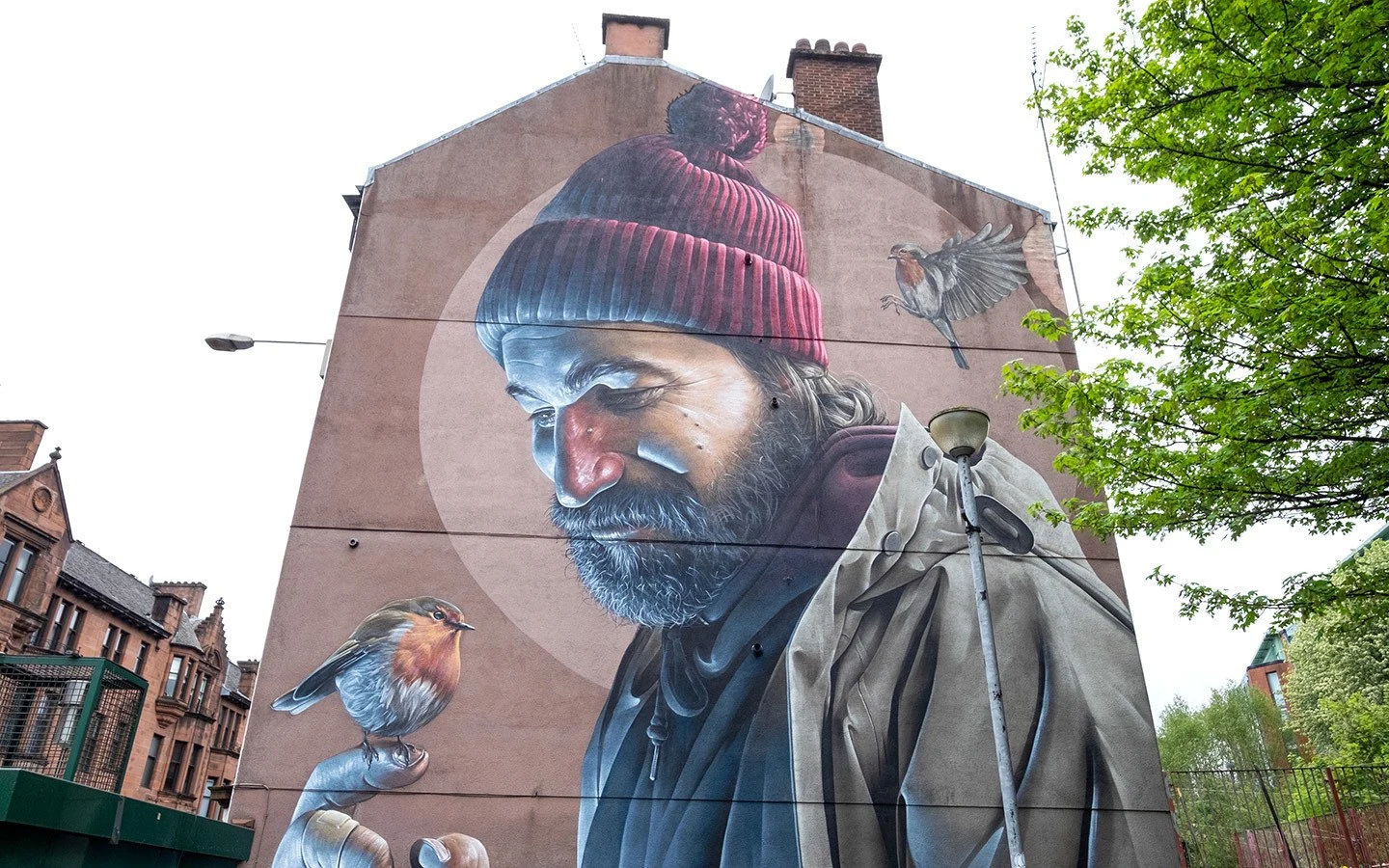
Take a walk along the River Clyde past the modern architecture of the SSE Hydro and Armadillo to the quirky Riverside transport museum, where you can take a tour of the Glenlee, a restored tall ship that’s one of just a few built on the Clyde that are still afloat.
Or visit Scotland’s oldest museum, the Hunterian, on the campus of the University of Glasgow, and explore the city’s medieval cathedral and atmospheric hillside Necropolis.
Where to stay in Glasgow: The Grasshopper Hotel* couldn’t be better located for train travellers – right next door to Glasgow Central Station, close to Merchant City’s shops, bars and restaurants. Rooms are smart and comfortable, with penthouse views over the city and special touches like handmade wallpapers, vintage cameras and free cupcakes.
Read more: A weekend in Glasgow: A 48-hour Glasgow itinerary

Day 3: Glasgow > Fort William
Then head north on the 3 hour 45 minute journey to Fort William in the Scottish Highlands, departing Glasgow Queen Street at 08.21 and arriving in Fort William at 12.08.
The West Highland Line is one of the world’s most scenic train trips, which runs along the banks of Loch Lomond, around Horseshoe Curve at Ben Dorain, past the UK’s highest altitude train station in Corrour (as featured in the film Trainspotting) and across remote Rannoch Moor on a line suspended above a peat bog.
Fort William is set on the banks of Loch Linnhe in the shadow of the UK’s highest mountain – Ben Nevis – making the town a real hub for hikers, bikers and other adventure-seekers. The climb to the top of Ben Nevis takes five–seven hours, weather permitting, so you might have to add in an extra day to your trip if you want to tackle the peak.
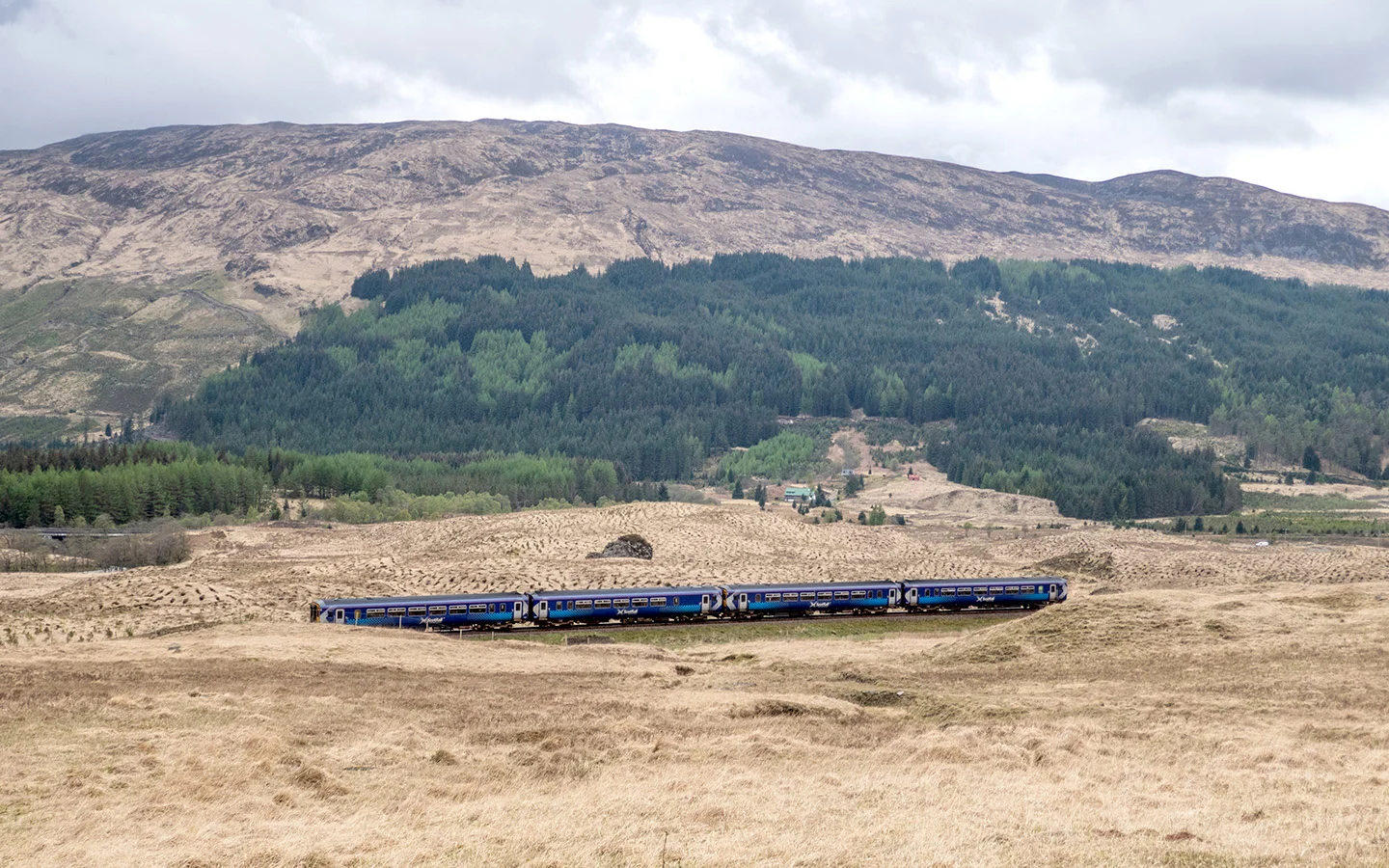
If you fancy something more sedate, it’s a pretty 1.5-mile walk along the River Lochy to the ruins of 13th-century Old Inverlochy Castle and the Ben Nevis Distillery, where you can do a tour and tasting of their whiskies. You can also learn more about the history of the Highlands (and see Rob Roy’s sporran) at Fort William’s West Highland Museum.
Where to stay in Fort William: Spend the night behind bars in former police station The Garrison* in the centre of town. Choose from a modern en-suite room, or an original cell that’s been converted into compact double or bunk room with shared bathroom.
Read more: 13 things to do in Fort William and Glencoe
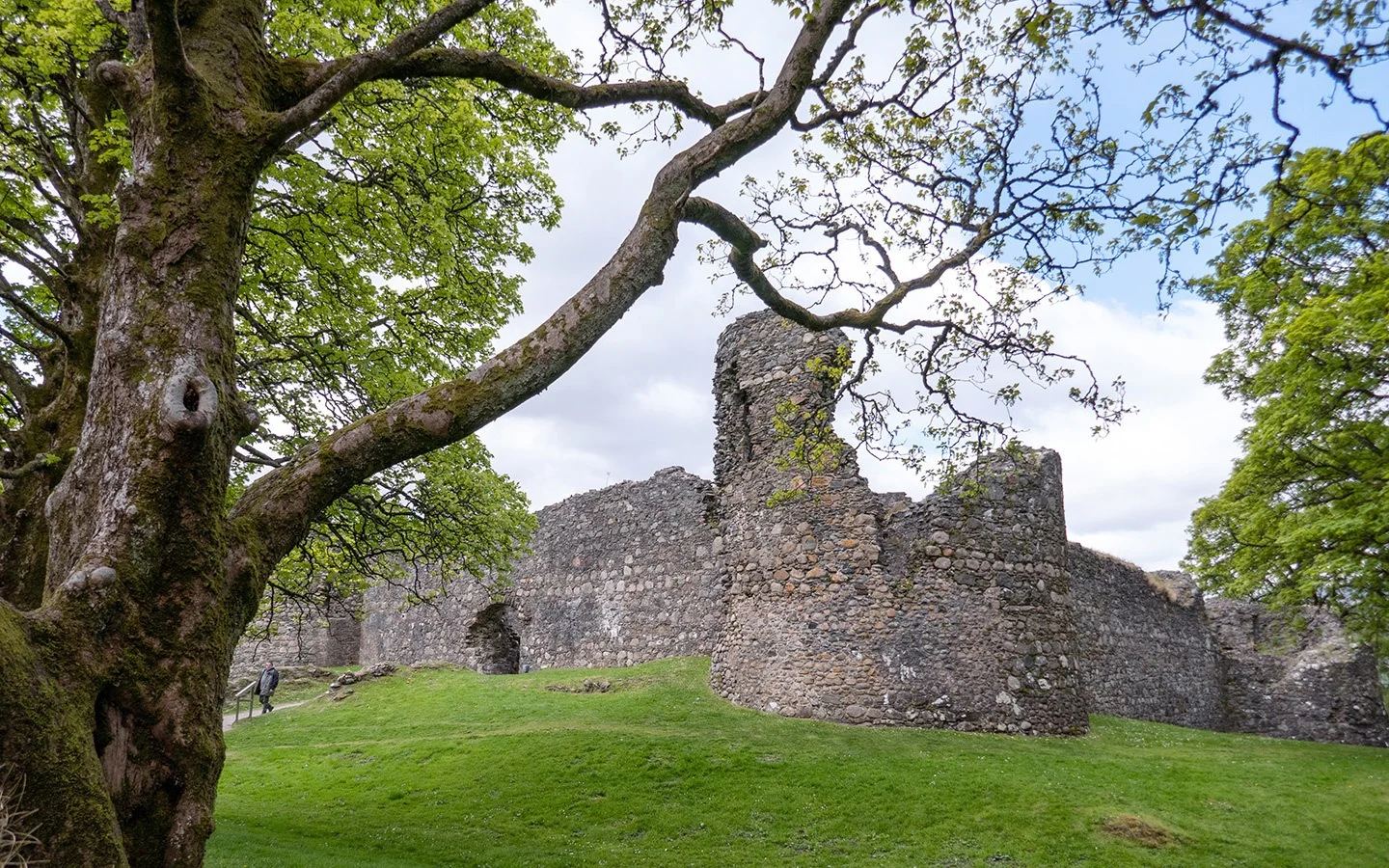
Day 4: Fort William > Isle of Skye
The following day, reboard the West Highland Line for the 1.5-hour journey from Fort William to Mallaig across the curving Glenfinnan Viaduct and past lochs and the sandy beaches of Morar. If you depart Fort William at 08.15 you arrive in Mallaig at 09.38.
Or from April–October you can also ride the Jacobite steam train, better known as the Hogwarts Express (departs Fort William at 10.15 and arrives Mallaig at 12.26).
Then swap the train for the ferry to the Isle of Skye. Ferry times vary throughout the year, with 8–10 sailings a day in summer. If you have time for lunch before you sail, try locally caught prawns or fish and chips at Mallaig’s Fishmarket Restaurant.
The ferry from Mallaig takes 45 minutes to reach Armadale in Skye. From Armadale you can catch the 52 bus to Portree (changing in Broadford), but buses are slow and infrequent so it may be worth taking a taxi if there are a group of you – it takes an hour and costs around £90–£100, but you do need to book taxis well in advance.
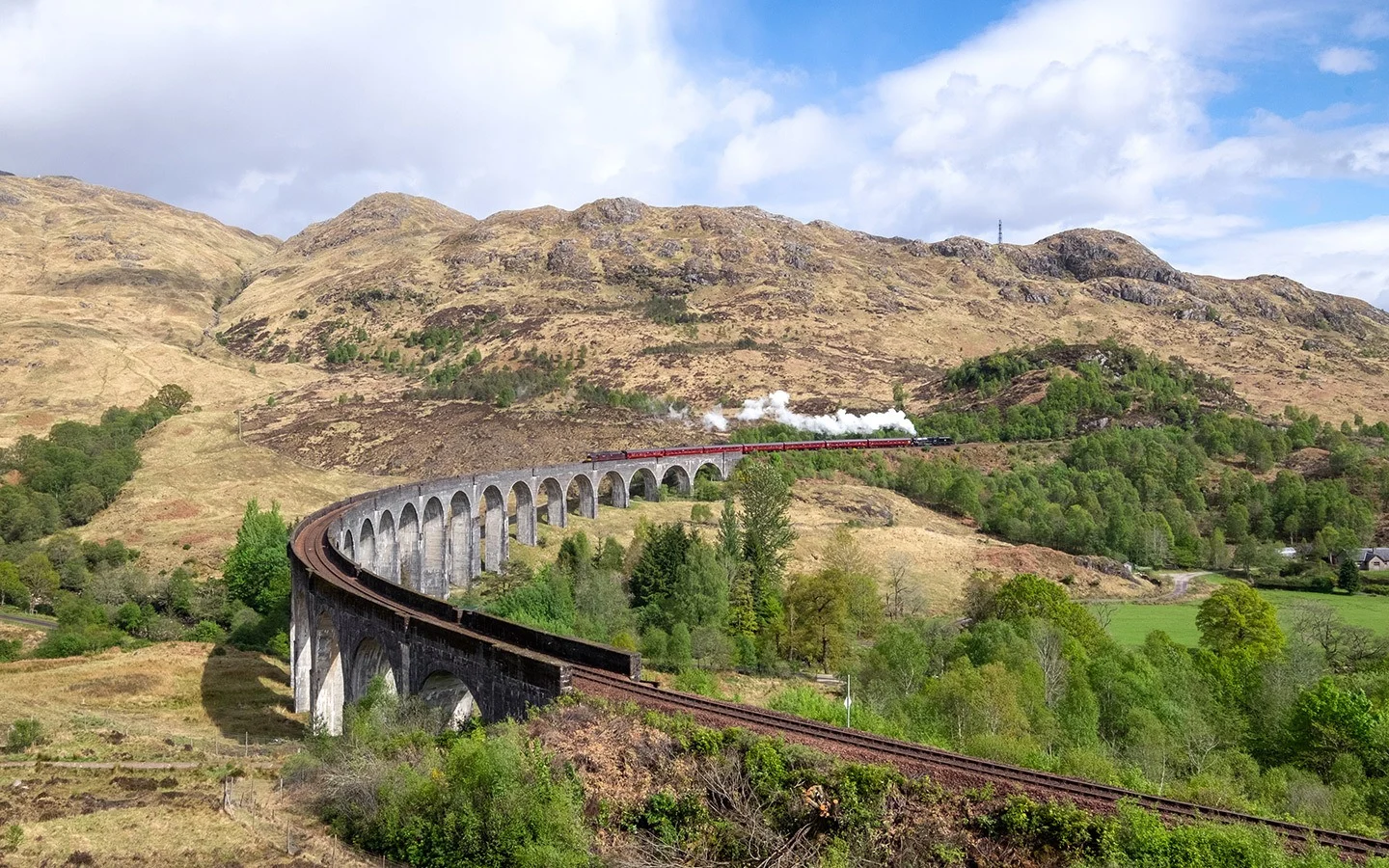
Portree is the capital and largest town on the Isle of Skye, set around a picturesque harbour with pastel-painted houses and surrounded by hills. It’s the hub of transport and tours for the island, and a good place to shop for souvenirs, with local producers including the Isle of Skye Soap Co, Skyeskyns and Isle of Skye Distillers all having shops in town.
Where to stay in Portree: The Cuillin Hills Hotel* is half a mile outside of Portree but comes with knockout views across the Bay of Portree to the Cuillin Mountains from its 15-acre gardens. Inside are traditional Scottish touches, from tartan fabrics to local seafood in the restaurant and a malt whisky bar with over 130 varieties to choose from.
Read more: Isle of Skye itinerary: The best of the island in 3 days
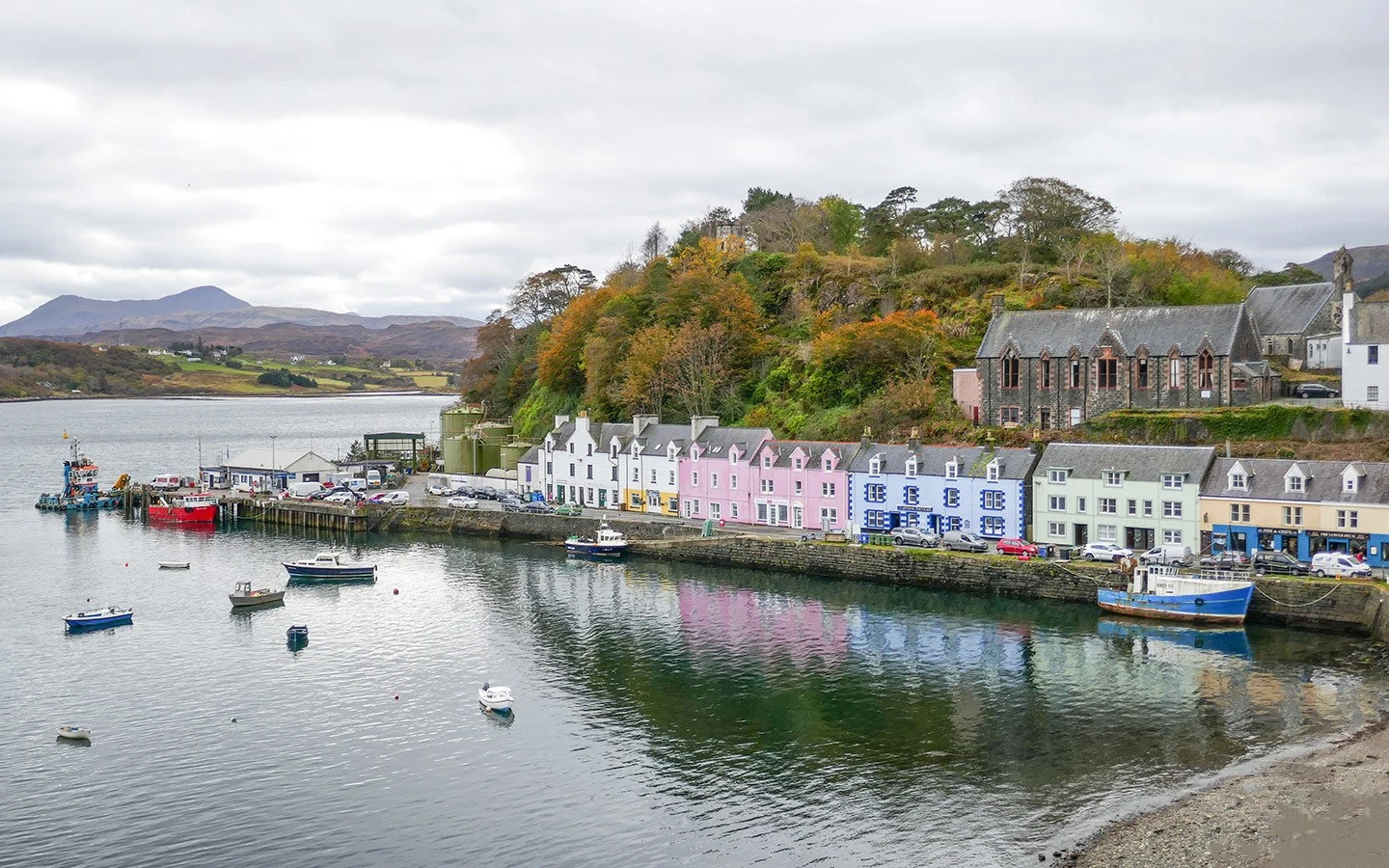
Day 5: Isle of Skye
Today you have the whole day to explore the Isle of Skye – buses connect Portree with many parts of the island, but it’s easier option to either hire a car for the day (book in advance as availability’s limited) or take a guided day tour of Skye’s highlights. A small group day tour* (£80 per person) departs Portree at 9am and returns at 6pm.
The Isle of Skye is known for its magical landscapes, with dramatic rock formations around the Quiraing which look like something from another planet (and are a film location favourite). Admire the 200-foot Old Man of Storr and the steep cliffs at Kilt Rock.
Visit the lighthouse at Neist Point and look out for dolphins and whales, or tour imposing lochside Dunvegan Castle, the oldest continuously inhabited castle in Scotland.
Skye has plenty of myths and legends – get away with the fairies at the Fairy Glen, a grassy glen with rock spirals and ancient trees dripping with moss. Or follow the 1.5-mile path to the Fairy Pools with their clear green waters and cascading waterfalls.
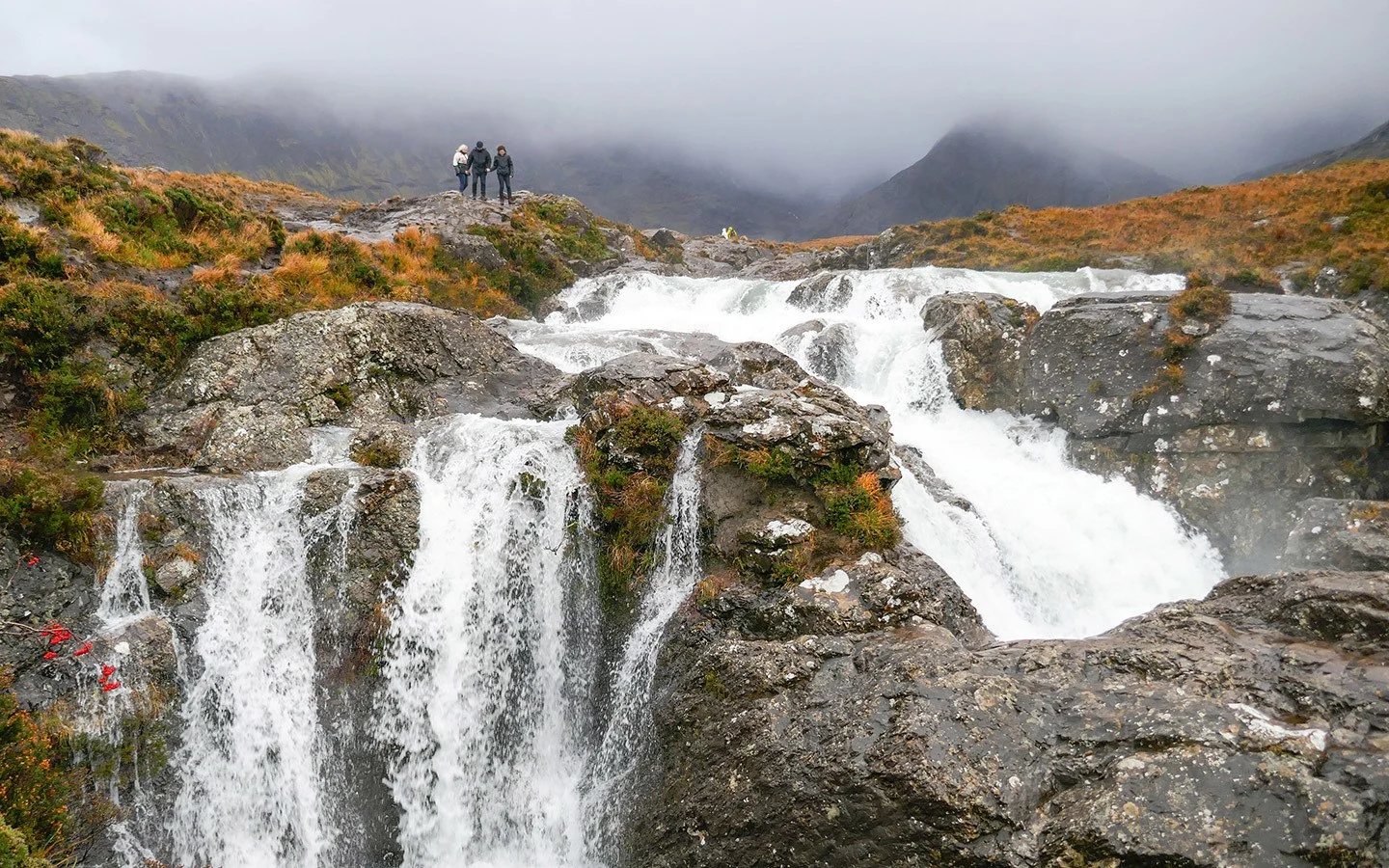
Day 6: Isle of Skye > Inverness
The next day, catch the CityLink bus from Portree to Kyle of Lochalsh, where you pick up the train for the journey to Inverness. There are a couple of different options – the number 915 bus from Portree Square departs at 10.35 and arrives in Kyle at 11.36.
Or if you’d like to visit nearby Eilean Donan Castle, catch the earlier 07.30 bus from Portree to Dornie, arriving at 08.48. Spend a few hours at the castle before travelling back to Kyle of Lochalsh on the 11.44 service (which takes around 15 minutes).
Then catch the 13.46 train from Kyle of Lochalsh for the 2 hour 40 minute journey to Inverness, arriving at 16.27. The Kyle Line is another of the UK’s top scenic train routes. Opened in 1870, it runs through remote landscapes, following the coast with views of Syke, across moorland and past the Torridon Peaks – keep an eye out for deer on the way.
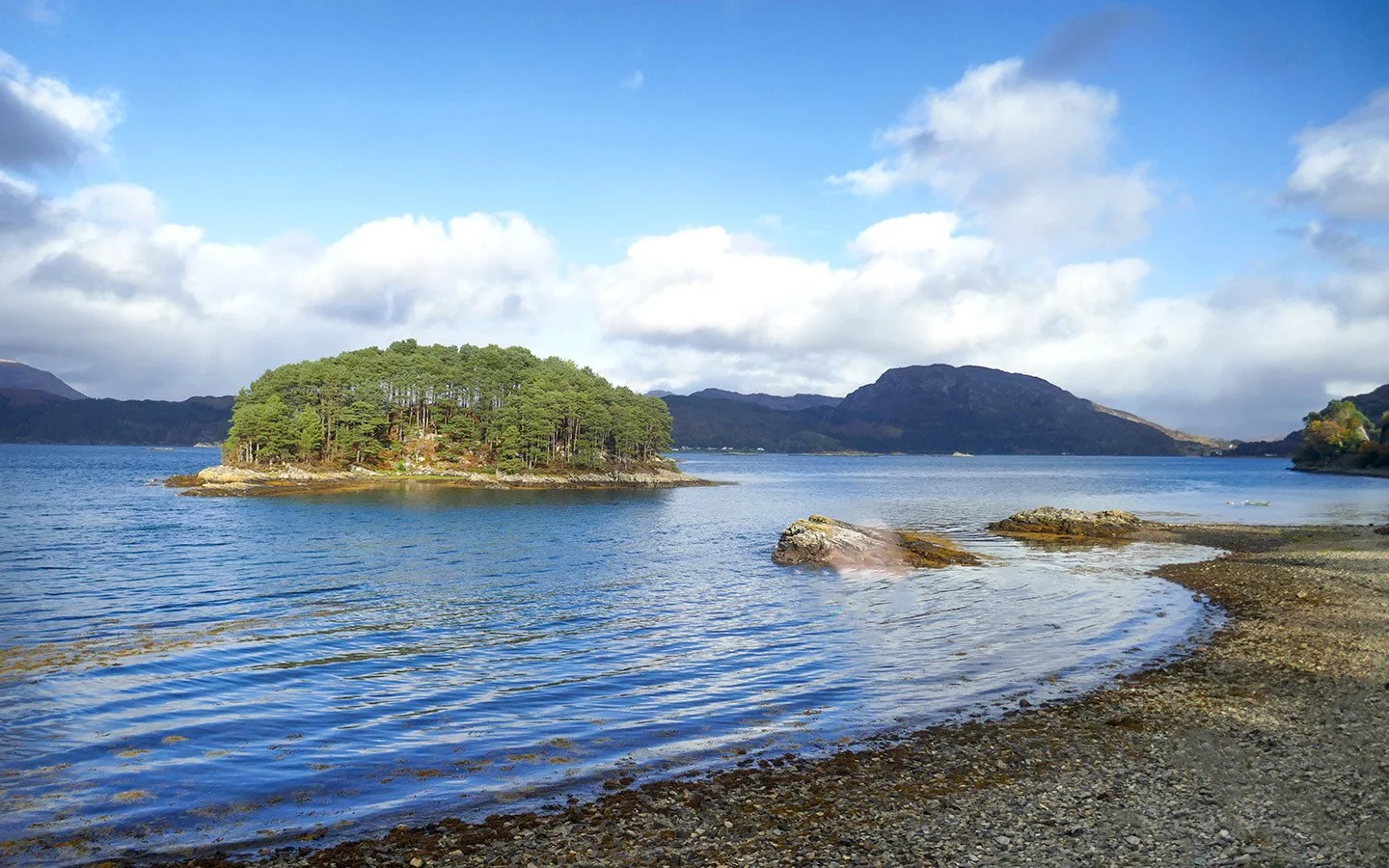
Spend the evening in Inverness – capital of the Highlands. Follow the path along the River Ness to the Ness Islands, a group of tree-covered islands connected by elegant Victorian footbridges. Or head up to Inverness Castle to watch the sun set over the city, before checking out some of Inverness’ live music scene at pubs like Hootananny.
Where to stay in Inverness: End your trip in style with a night at the five-star Rocpool Reserve*. This Georgian house has been converted into a lavish boutique hotel with bar and restaurant. Its luxurious rooms come with Egyptian cotton bedding, emperor-size beds and 24-hour room service – and some have outdoor hot tubs, saunas or balconies.
Read more: A weekend in Inverness: A 48-hour Inverness itinerary
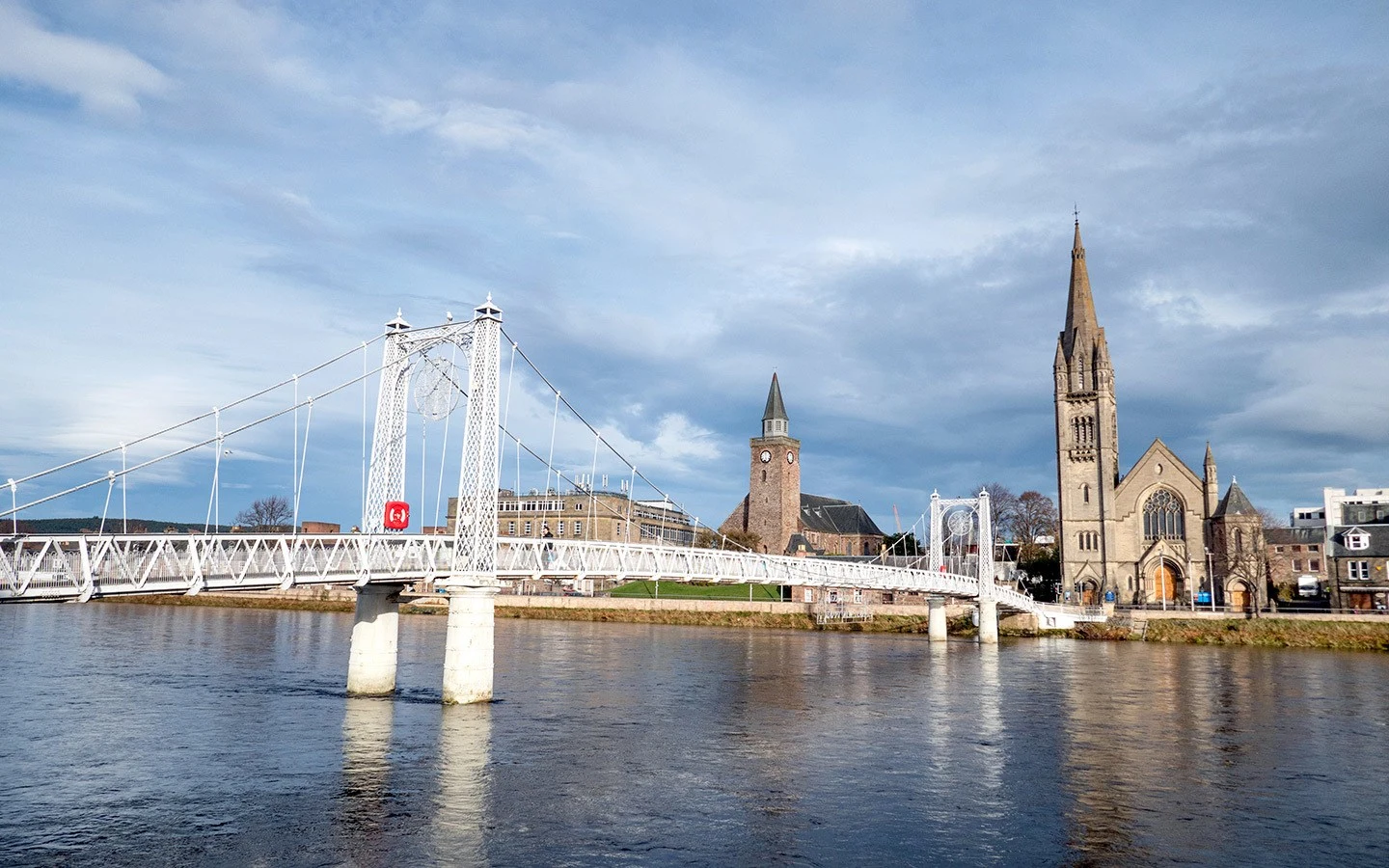
Day 7: Inverness
Spend the final morning of your Scotland by train trip seeing more of Inverness. Learn about the history and culture of the Highlands at the Inverness Museum and Art Gallery and shop for secondhand books at Leakley’s. Or if you have time you can take a half-day trip out to either Loch Ness and Urquhart Castle, or the battlefield at Culloden.
Then if you’re flying back home, Inverness Airport is 10 miles north of the city. The two are connected by the 11 bus, which takes around 35 minutes. Or if you’re travelling back to Edinburgh, the train journey from Inverness takes 3.5 hours. There’s also the Caledonian Sleeper overnight train which connect Inverness to London in around 11 hours.
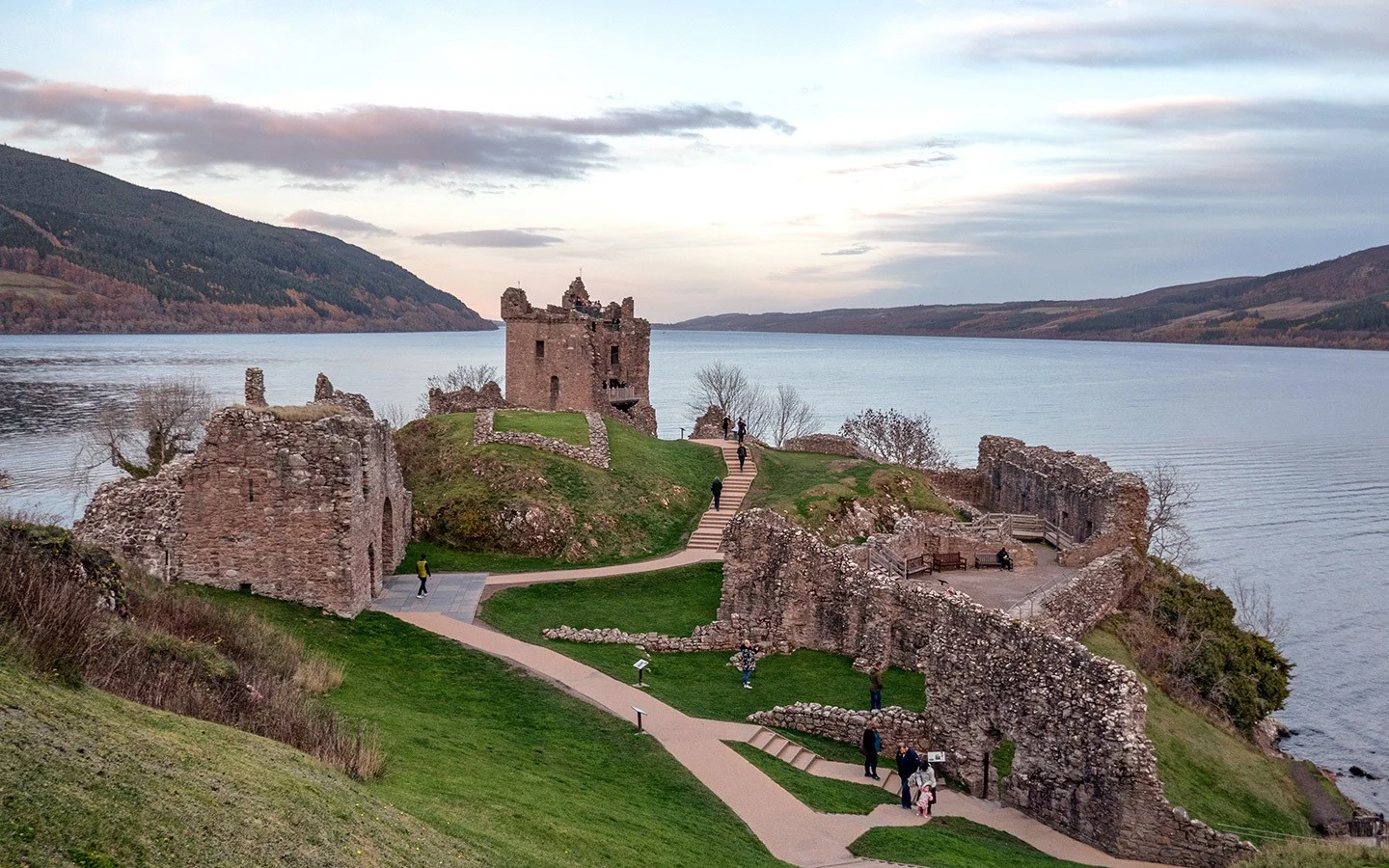
More time?
If you have more time, you could head north to John O-Groats – most northerly point of mainland Britain – Caithness and the Cromarty Firth on a day tour* from Inverness. Or catch the train south to Aviemore in the Cairngorms National Park for mountain hikes in summer, skiing in winter and the Strathspey Steam Railway. There are also plenty more Scottish cities to discover nearby, including Dundee, Aberdeen and St Andrews.

How much does it cost?
When you’re planning a Scottish rail trip, you can either book individual tickets or get a railpass, which can be a better deal if you’re under 28/over 60, want more flexibility or are booking late. Here’s how prices break down for the two different options on this route.
Individual tickets
Ticket prices depend on how early you book and if you’re booking a specific train or want to be flexible. There are three main fare categories: Advance, Off-Peak or Anytime. Advance are cheapest and can be booked 8–12 weeks in advance, but are non-transferable so you’re tied to a specific train. Off-Peak services are valid on any train outside weekday peak hours. And Anytime are most expensive but can be bought on the day and used on any train.
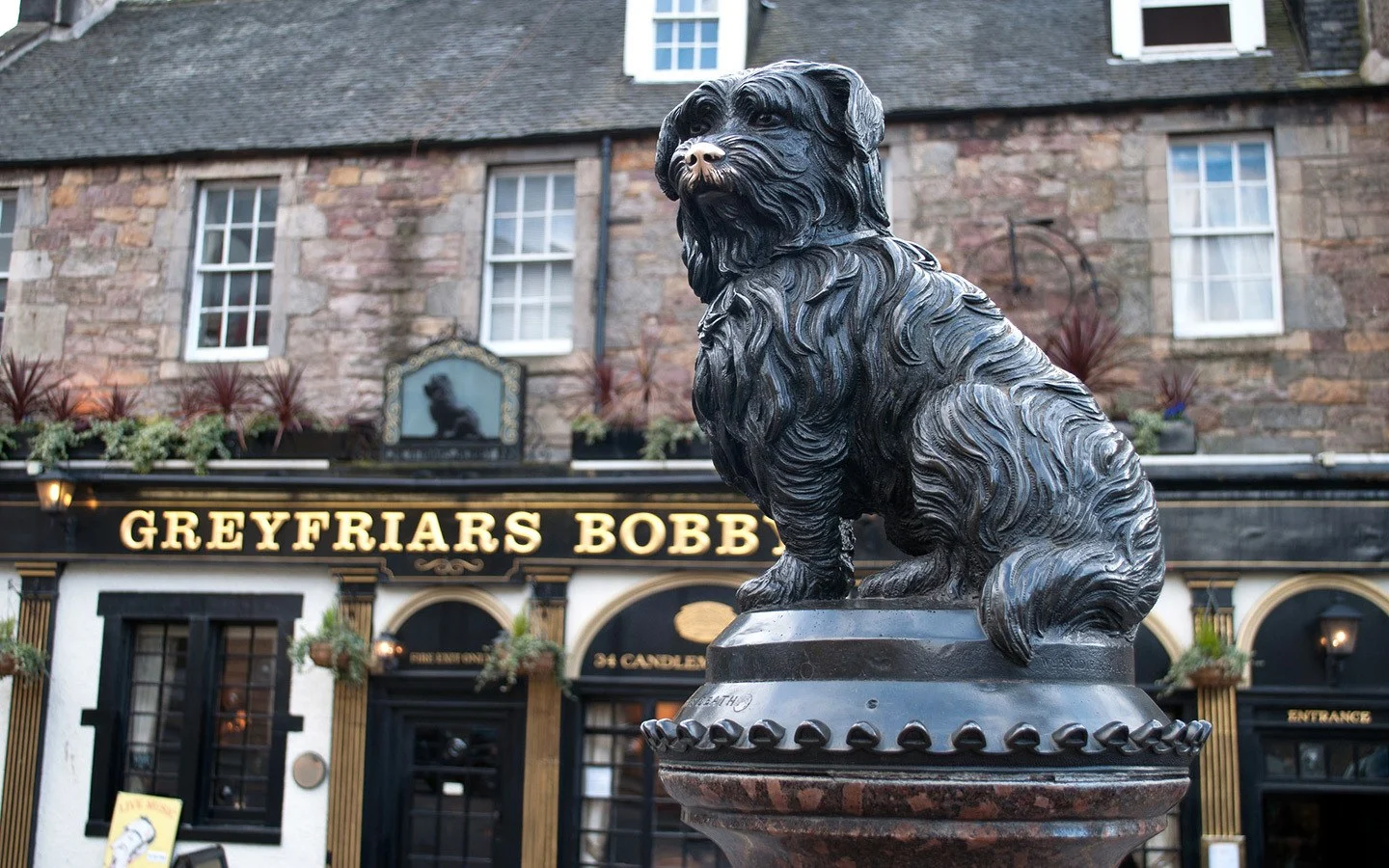
Using the cheapest Advance fares, the cost of trains on this route starts at £69 per person:
- Edinburgh > Glasgow: from £14.70
- Glasgow > Fort William: from £26.60
- Fort William > Mallaig: from £8.20 (£65 for The Jacobite)
- Mallaig > Armadale (by ferry): from £3.20
- Kyle of Lochalsh > Inverness: from £15.90
You can also save a third on all rail fares with a Railcard*. These cost £30 with different versions for 16–25s, 25–30s, Seniors and Disabled People. You can also get a Two Together railcard for two named adults travelling together, or a Friends and Family Railcard for up to four adults and four children. Both UK and overseas residents are eligible.
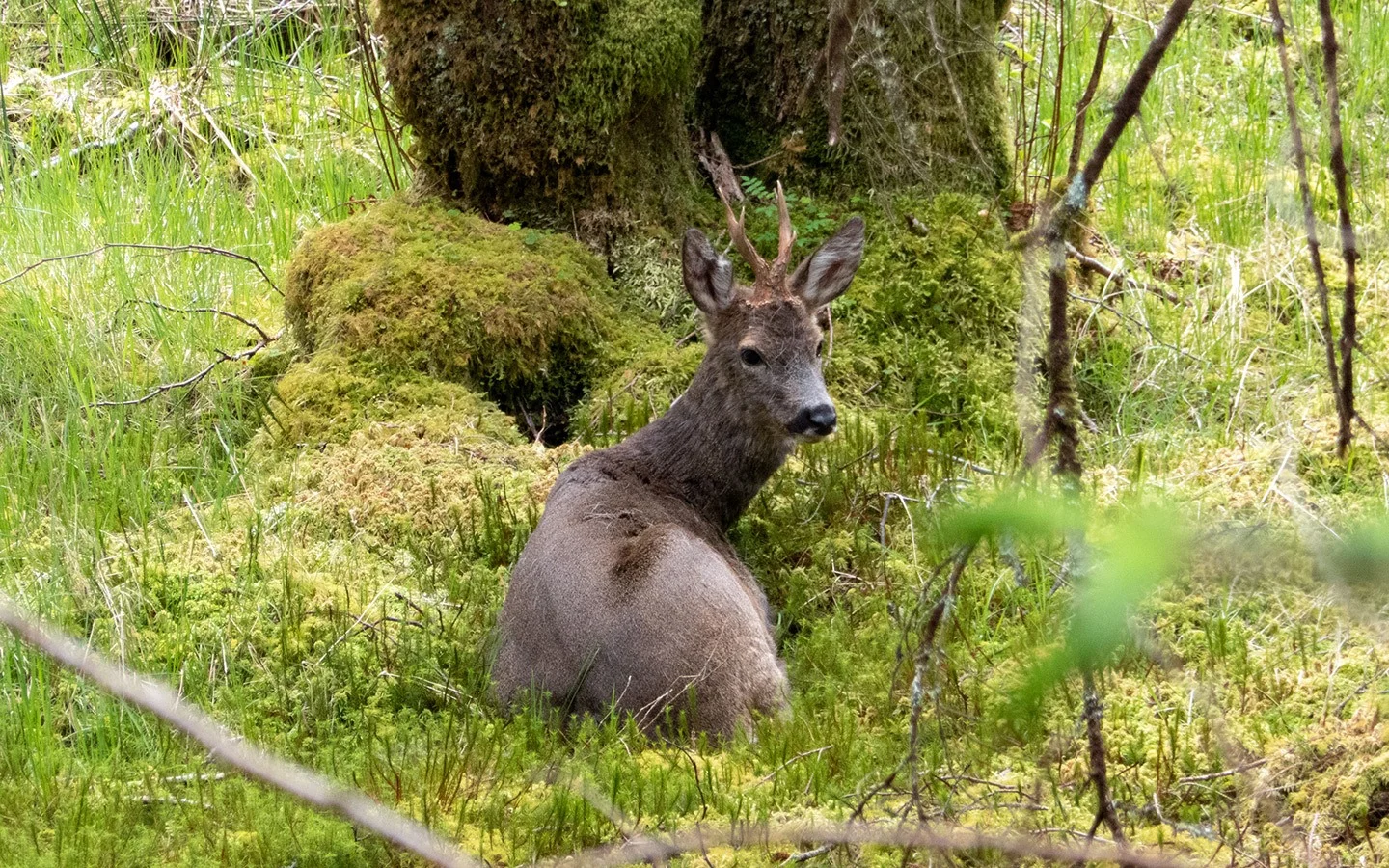
The railpass option
There are various rail passes available, and which you’re eligible for depends on where you live. If you live outside the UK, you can can get a InterRail/Eurail pass (InterRail is for European residents and Eurail is for non-European residents).
For the Scotland by train itinerary, the best InterRail/Eurail option is the One Country Great Britain pass for 4 travel days within 1 month, which costs £199 for adults, £167 for youths aged 12–27 or £179 for seniors in second class.
ScotRail also offers its own rail passes, which are available to both UK and overseas residents. The best option for this itinerary is the Spirit of Scotland Pass for 4 days within 8 days, with unlimited travel by train, ferry and coach. It costs £149 for adults and is half price for children aged 5–15, with discounts for Railcard holders.
Passholders are recommended to make seat reservations – though it’s probably only worth doing for long-distance services or at busy peak times so you’re guaranteed a seat – which you can do for free at any UK train station up to two hours before departure.
Please note The Jacobite steam train is privately owned so isn’t covered by any rail passes.
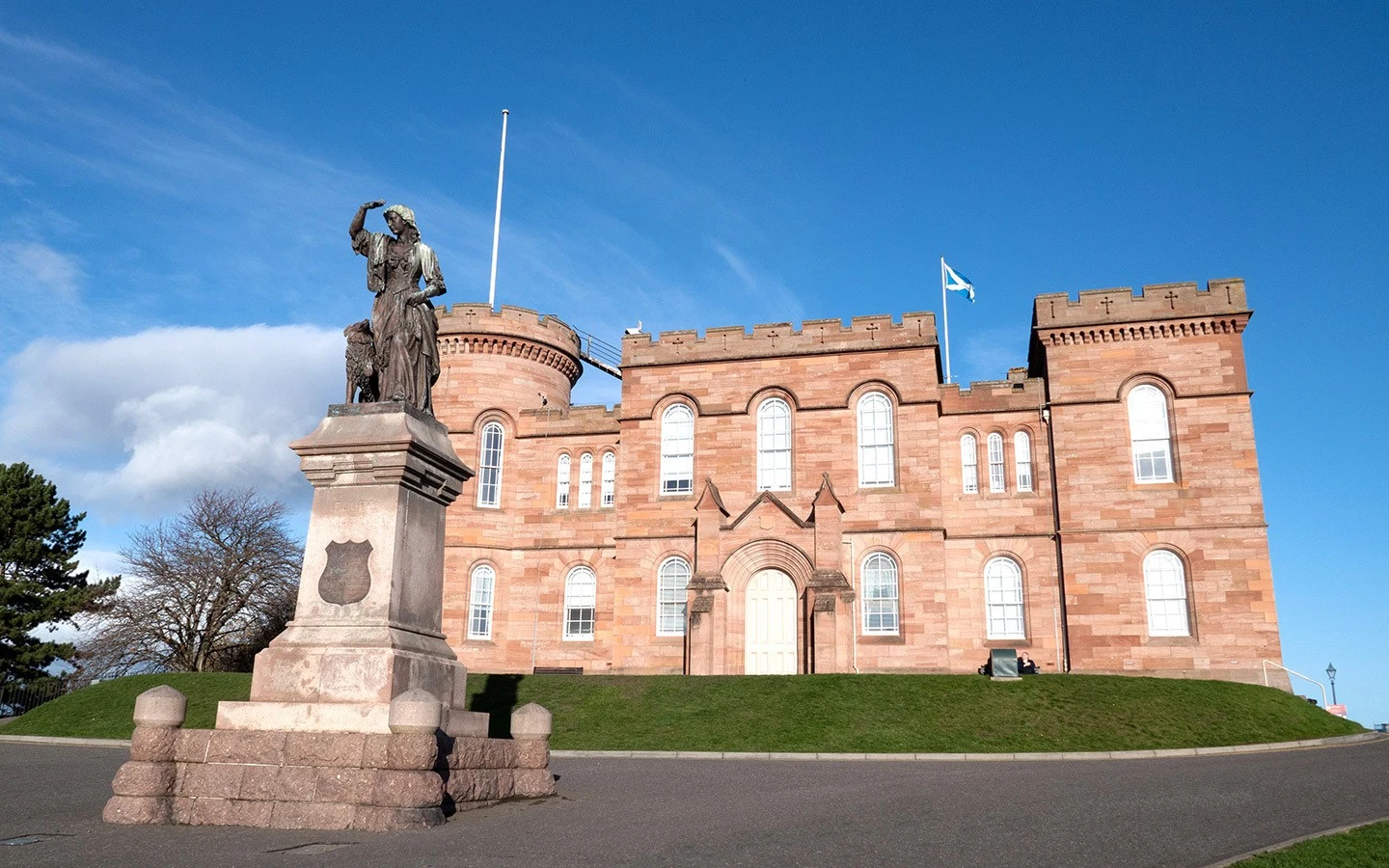
How to book
There are a variety of websites where you can book UK train journeys, but some charge a booking fee. To avoid fees you can book direct with ScotRail and either use a mobile ticket on your phone or collect them from a ticket machine or a counter at the station. Or if you have an international credit card you can book with The Trainline for a small fee.
Don’t want to do it yourself? You can also book a custom trip based on this Scenic Scotland by train itinerary through our partners Byway,* the flight-free holiday platform, which includes transport and accommodation.
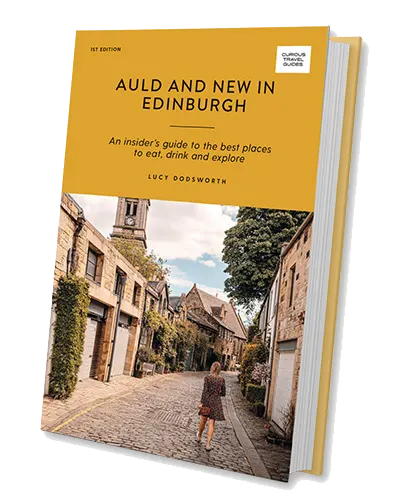
Love Edinburgh?
My new book, Auld and New in Edinburgh, is available to order now. Part of the Curious Travel Guides series, this curated guide features over 100 amazing places to eat, drink, shop and sightsee to help you plan the perfect Edinburgh trip.
Save for later
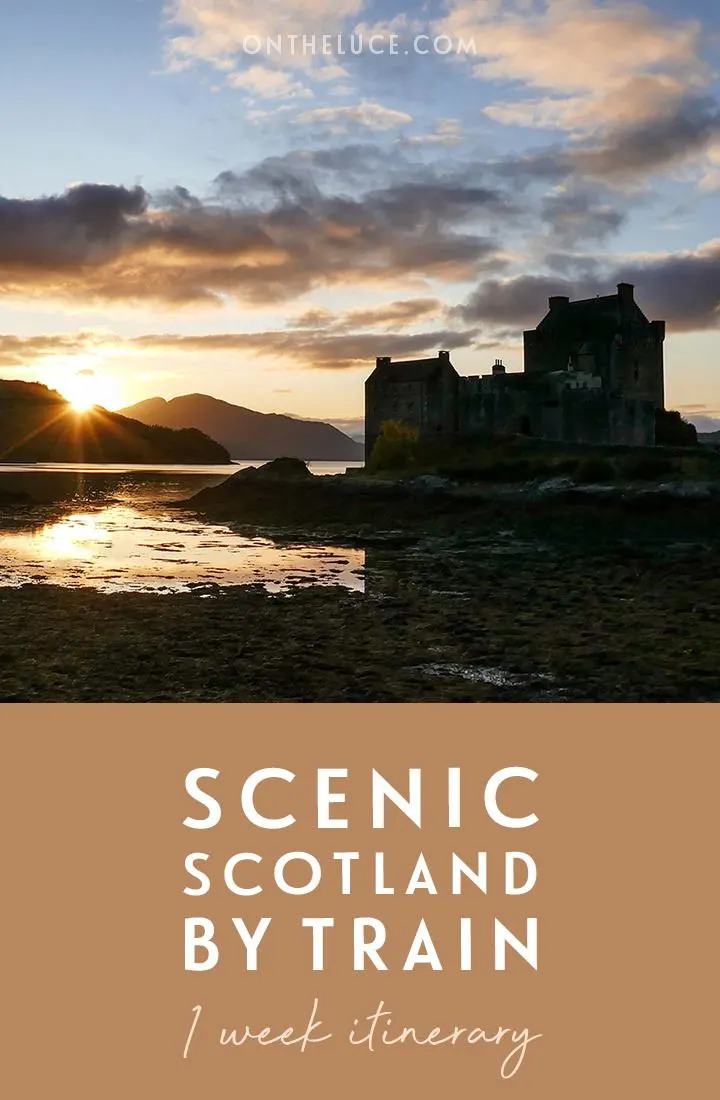


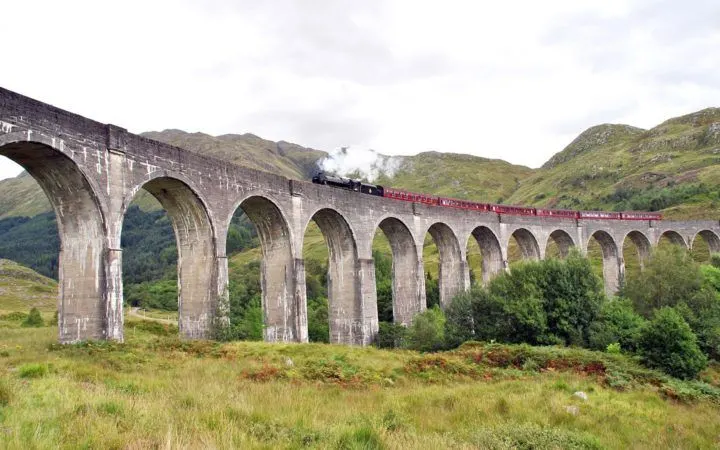
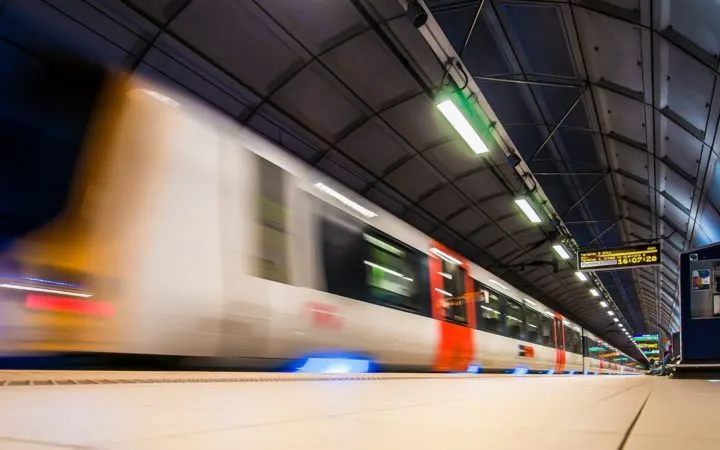
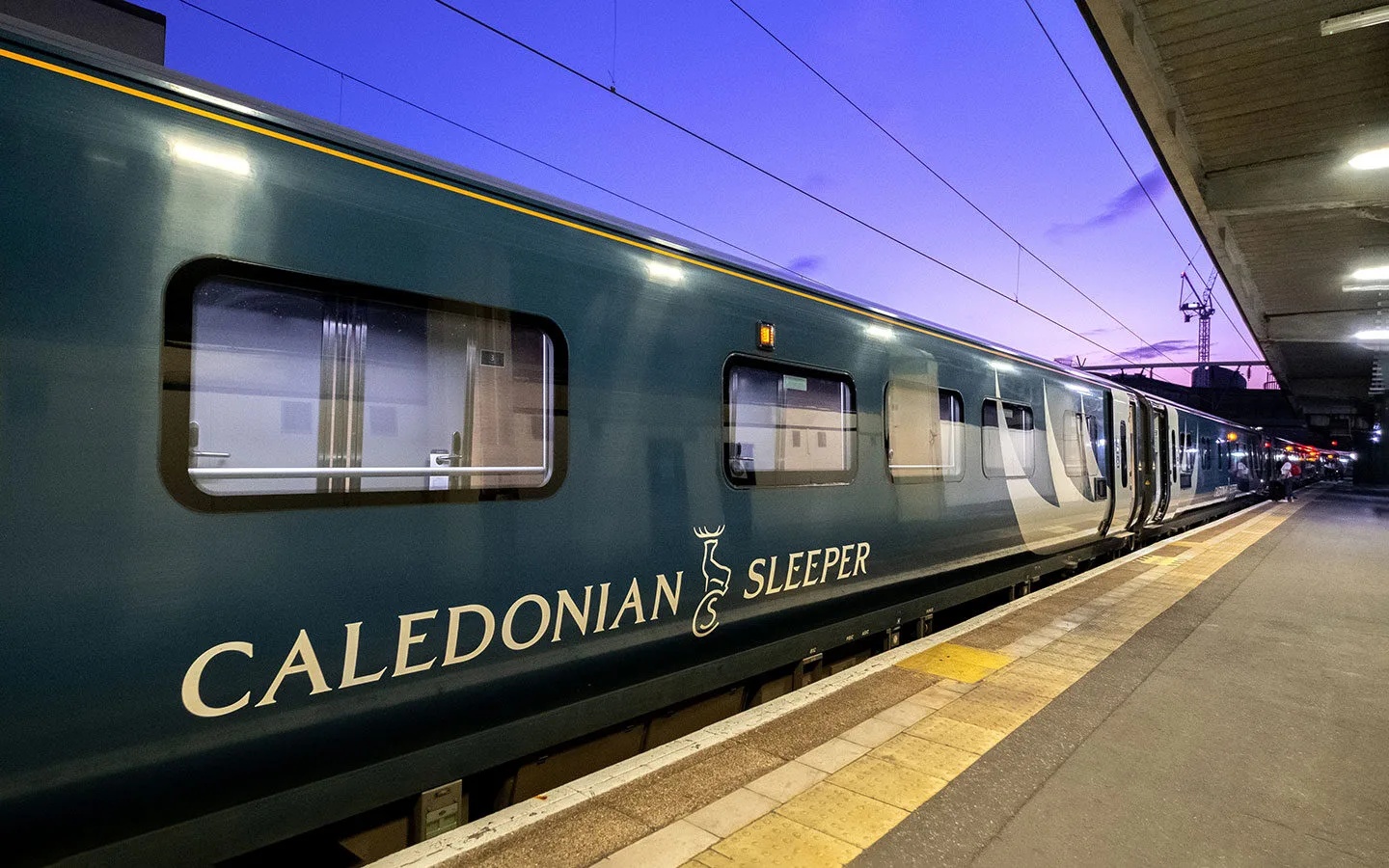
Serge
Sunday 21st of January 2024
Hi Lucy, Thanks a lot for this itinerary, looks great. We are actually planning a week in Scotland in May. We are not really interested in Glasgow and we were thinking about making our first stop after Edinburgh at Tarbet (have a cruise on the Loch and walk around) Can you let me know your opinion and any suggestion ? Thanks a lot. Serge
Lucy Dodsworth
Monday 22nd of January 2024
Hi Serge, yes you could definitely swap that in. It's 2.5 hours by train from Edinburgh to Arrochar and Tarbet (with a change in Glasgow), so if you took a morning train on Day 2 you could do a boat trip in the afternoon and stay the night there, then catch the train to Fort William the next day which is 2.5 hours and carry on the itinerary from there.
Tim Klein
Monday 15th of January 2024
Great itinerary! I am considering taking the train from Glasgow to Mallaig, ferry to Armadale and bus to Portlee in one day next month. How do the buses run from Armadale to Portlee this time of year? Are there tours of Skye running in February? I'm planning on a three day stay in Portlee. Any suggestions?
Lucy Dodsworth
Monday 22nd of January 2024
Hi Tim, there are buses Stagcoach 52 buses between Armadale and Portree but they're not very frequent this time of year to you would need to time it carefully (timetable here: https://tiscon-maps-stagecoachbus.s3.amazonaws.com/Timetables/North%20Scotland/Highlands/Skye%20Revised%202022.pdf). You would probably need to take a private tour in February – try Real Scottish Journeys who do winter tours.
Karen
Sunday 7th of January 2024
Hi, Great itinerary. Would like to go Glasgow to Oban, Oban to Fort William. What is the best way Oban to Fort William. Additionally, recommend a stop between Inverness and Edinburgh. Thanks
Karen
Sunday 4th of February 2024
@Karen, Thank you Lucy for your insight. Any thoughts on the Spirit of Scotland pass? In short,we are two seniors traveling, Edinburgh to Glasgow,train, to Oban,train,to Ft. William,bus,to Skye,train,taxi to Dorrie,bus,Kyle of Lock to Inverness,train, Inverness to Edinburgh,train. In April. I tried to add up separate fares,still confusing.Need flexibility in case of changes.Also, is it advisable to reserve a seat on the Ft. William to Mallaig , ferry section. Would appreciate your guidance
Lucy Dodsworth
Monday 22nd of January 2024
Hi, Oban to Fort William is slow by train (4 hours) but you can take the West Coast Motors 918 bus instead which is less than two hours. It does only run a couple of times a day though (https://passenger-line-assets.s3.eu-west-1.amazonaws.com/westcoastmotors/WCMO/918-timetable-20220815-14e38acb.pdf). Between Inverness and Edinburgh you could stop off in Aviemore to see the Cairngorms, or do a short diversion to Leuchars to visit St Andrews which is a lovely city.
Karen
Saturday 6th of January 2024
Thank you for your helpful ideas. We will be touring Scotland by train in late April using a very similar itinerary. We plan to purchase the Spirit of Scotland Rail pass. Once I purchase that, am I able to reserve seats for the various legs of the train journey? We live in the US, so I need to do everything I can online. On the Scotrail website, it looks like I need to buy individual tickets in order to get a seat reservation online. If we can't make seat reservations, do we just arrive early to help guarantee we get on the desired train? Thank you for any insight on reserving seats with the Spirit of Scotland Rail pass!
Lucy Dodsworth
Monday 22nd of January 2024
Hi, you don't need to make seat reservations with the Spirit of Scotland pass, and a lot of trains don't take reservations. The ones that do on this route are Glasgow > Fort William and Inverness > Edinburgh – you can't reserve online using the pass but you can do it at stations, so could make reservations when you first get to Scotland, or call 0344 811 0141 when you arrive in the UK.
Maggie
Friday 29th of December 2023
Hi Lucy,
I am planning a trip from May 4-13. For now, I have a couple nights in Edinburgh, one in Glasgow, and one in Fort William.
Here are some concerns and questions I have: I booked the Jacobite on Thursday. It’s a return—so it’ll go from Fort William to Mallaig, and the back. I’m a little worried about how to get from Armadale to Portree without a vehicle. Should I just take the return train to Fort William and try to go to Iverness?
I’ve never been and we are trying to avoid renting a vehicle if possible.
Also, for the other train trips, other than Jacobite, should I try to book trains in advance?
I’m just worried and I don’t want to get stuck. Any advice would be greatly appreciated. Thanks.
Maggie
Maggie
Thursday 4th of January 2024
@Lucy Dodsworth, Do you know if there are buses that run from Fort William to Inverness daily?
Lucy Dodsworth
Saturday 30th of December 2023
Hi Maggie, for the Jacobite you have to buy a return ticket but you can get off at Mallaig and not go back to Fort William. For the journey from Armadale to Portree, I'd advise pre-booking a taxi if you're not keen on relying on the buses (Fort William to Inverness isn't really advisable by train – you have to go all the way back to Glasgow so it takes 8+ hours!). You shouldn't need to book the other trains in advance but you can do if you want to be sure of a seat – they can be booked via Scotrail normally 2-3 months in advance. Hope you have a great trip!